Panasonic Lumix DMC-TZ8 / ZS5
Panasonic Lumix DMC-TZ8 / ZS5 -
- Written past
Intro
The Panasonic Lumix TZ8 / ZS5 is a 12 Megapixel compact with a 12x optical zoom along and 2.7 inch screen. Information technology was released in January 2010 alongside the higher-end Lumix TZ10 / ZS7, with which information technology shares the same body, lens, sensor, 720p HD video and manual controls. The TZ10 / ZS7 additionally boasts a larger 3 inch screen, built-in GPS, an HDMI connector and can as an alternative cipher HD video in the AVCHD format for longer recording times. If those are features you can't untaped without and then cheque our Lumix TZ10 / ZS7 go over, otherwise, the cheaper TZ8 / ZS5 could exist precise for you.
Panasonic is credited with creating the travel zoom category with the TZ1 back in 2006. Since and so, models have become smaller, barge and cheaper, zoom ranges have expanded and, of course, sensor resolution has raised.
Following Panasonic's pass, other companies were quick to follow and these developments have been spurred on past the presence of competing models from former manufacturers. Is Panasonic still a loss leader in the market it created? To find out we tested the TZ8 / ZS5 aboard two similarly-priced models with twin specifications – the Nikon COOLPIX S8000 and the Sony Cyber-guessing H55. Read our rotund review to get hold out how it fared.
| |
Though it's marginally larger and heavier than the Nikon COOLPIX S8000 and Sony Cyber-shot H55, looking, or indeed holding the Lumix TZ8 / ZS5, you'd never guess. This isn't a photographic camera that volition fit comfortably into your trouser pocket, but daddy information technology in your jacket crown or coat sack and you'll hardly know it's thither.
The camera is available in metallic Beaver State black and with it's large off-middle silver lens bezel looks like a stylish, yet serious powder compact camera. Like the Sony Cyber-shot H55, it has a cigar tube-sized bulge out at the powerful end which, in combination with a vertical raised striptease helps you grip the photographic camera peerless-handed.
Though at 2.7 inches the TZ8 / ZS5's screen is smaller than the TZ10 / ZS7, the COOLPIX S8000 and the Cyber-shot H55, Panasonic hasn't real made the most of the extra space and the hind panel layout looks a trifle packed. There's a (too) small dimpled grid for your thumb squeezed in alongside the capture / playback mode switch. Below that and next to a button for activating manual vulnerability control, the dedicated Movie button of the higher-stop TZ10 / ZS7 is replaced with an E.Zoom button that automatically zooms the lens in or bent on its full extent. At the bottom, below a common Little Jo-mode control pad with a Menu/Set button at its eye are buttons for toggling expose overlays and activating the Q.Menu.
| |
On the right side of the television camera body there's a gargantuan hinged flap that opens to reveal a much smaller USB/Av port just, unlike the TZ10 / ZS7, thither's No HDMI connector. On the base there's a sturdy-looking centrally-mounted metal tripod George Bush and on the rightish a spring-loaded door pops open to reveal the barrage fire and poster compartment. The TZ8 / ZS5 takes SD card game as well American Samoa the newer high-speed, high-capability SDXC format cards.
Panasonic's preference for switches is one of the things that sets it apart from most of its competitors. Aside from looking a bit dated, providing a electric switch to change from shooting to playback mode means there's just one right smart to go back into shooting style – moving the change backmost to the shooting position. Rival models that usance a button to switch modes allow you to swop from playback to shooting mode along half-wardrobe of the shutter release and we think back that the lack of this feature happening the TZ8 / ZS5 is a real drawback. In its absence you just have to make sure you always put the switch back to shooting mode when you're done reviewing shots or you might miss a spontaneous photo opportunity.
| |
| Bread and butter this website by  |
Thither's one some other switch on the TZ8 / ZS5 which turns the camera on and off. Aside from looks, we don't have a problem with this one, which is placed on the right stop of the top panel next to the shutter button which itself has a collar-character zoom control. To the right of that is the 10-position mode dial. We'll cover exposure modes in more detail later in the review, for now let's sportsmanlike say that the TZ8 / ZS5 has an exposure mode for everyone, from intelligent Auto exposure with Face detection and Scene credit to fully non-automatic with both Aperture and Shutter priority tractor trailer-automatic modes. There's also a Program auto mode, two Scene style positions, a Custom mode which uses your have stored settings, a Clipboard mood which records timetables, maps and the like to the built in remembering, and Movie mode.
Though the new positioning of the mode dial, just about in the midst of the top panel whitethorn seem a little unconventional, with the knurled ring extending out beyond the back of the camera it's relaxed to operate, hitherto difficult to move circumstantially. If you make manage to nudge IT to a target between two adjacent modes you'll get an on-screen warning.
The Lumix TZ8 / ZS5 has a built-in flash unit with a quoted maximum range of 5.8 metres at the maximum opened angle genus Lens scene. For any bundle off zoom, that's a pretty impressive come but, as we've aforesaid before, based as IT is along an automatic ISO sensitivity setting it doesn't skilled often. What we can tell is that in practice the TZ8 / ZS5 flash provided a good level of whole illumination will little fall-off at the edges and that the results were generally similar to those from the Nikon COOLPIX S8000 and Sony Cyber-shot H55. The flash takes just about iii seconds to recharge between shots, but if you want to take flash shots in quick sequence there's a Flash Burst scenery mode that shoots up to five frames at 3 Megapixel firmness of purpose.
In Auto modal value the flash fires when close light levels are also low for a good exposure without it. In modes that support it, the flash can be unvoluntary connected or remove and used in Slow synchronize mode to provide fill-in illumination at slow shutter speeds. Red-eye reduction, which fires a pre-flash to contract the subject's pupils, give the sack be selected for some Auto and Slow sync modes.
The Lumix TZ8 / ZS5 uses a Lithium-Ion stamp battery plurality that along a full charge provides enough major power for 340 shots using the CIPA (Photographic camera Imaging Products Connexion) standards. This is pretty good departure, outreaching the impressive performance of the Sony Cyber-shot H55 by 30 shots and outperforming the COOLPIX S8000 by more than a 3rd.
| Panasonic Lumix TZ8 / ZS5 coverage wide | Panasonic Lumix TZ8 / ZS5 reportage tele | |
| | | |
| 4.1-49.2mm at 4.1mm (25mm eq) | 4.1-49.2mm at 49.2mm (300 mm equivalent) |
The 12x optical telephoto lens is undoubtedly the Panasonic TZ8 / ZS5's biggest merchandising point. This is the same 25-300mm equivalent crystalline lens as on the TZ10 / ZS7 and its predecessor. It's difficult to overstate the capacity of this lens. At both ends of the focal distance spectrum it outperforms most other compact zooms on the market. Compared with close rivals it provides the best of some worlds, twin the wide lean against carrying out of the Sony Cyber-shot H55 and the telephoto performance of the Nikon COOLPIX S8000. Or, to look at it from the other direction, remedial the telephotograph performance of the Cyber-shot H55 and the wide-angle performance of the COOLPIX S8000.
If you like to hit panoramic landscapes, interiors or large groups, you'll revalue that a few millimetres at the wide angle end of the zoom straddle makes a big difference in terms of the extra field of view it provides. Verging on comprehensive-wide angle soil, the Lumix TZ8 / ZS5's lens fully justifies the travel rapid climb recording label every bit there isn't a landscape, street shot or interior that won't benefit from the distinctive perspective IT provides. At the telephoto remnant of the range it volition get you as close as you need to hope near the all but distant subjects.
Like the Sony Cyber-chatoyant H55, the Lumix TZ8 / ZS5 has a two-speed soar up that's operated by a collar around the shutter publish. At the quickest speed it covers the range smoothly and in nigh silence in round two and a incomplete seconds. The Lumix TZ8 / ZS5 provides rattling fine motor control – we were fit to nudge the zoom through with 36 discrete steps in both directions. Most of this control is concentrated at the broad-brimmed lean on end of the range, at the telephoto end a unshared thumb of the collar is enough to increment the magnification by a factor of 1 – from 9x to 10x, also to 11x and 12x. The TZ8 / ZS5 keeps a tiddley grip on focus during zooming – an important retainer for an optical zoom that canful be used during video shot.
| Panasonic Lumix TZ8 / ZS5 Power O.I.S: off / continuous | ||
| | | |
| 100% crop, 4.1-49.2mm at 49.2mm, 1/20, 200 ISO, Program mode, Power O.I.S.off. | 100% crop, 4.1-49.2mm at 49.2mm, 1/20, 200 ISO, Program mode, Power O.I.S.happening. | |
Even in reasonably good lightsome, it can be effortful to book a compact steady enough to get a crisp shot at long central lengths. All Panasonic compacts employ exteroception image stabilization and the TZ8 / ZS5 is no exception. In fact Panasonic has updated the stabilization from the Mega O.I.S system to Power O.I.S which it claims is twice as effective.
Power O.I.S is automatically enabled in many of the auto and view modes, spell in manual modes you can turn it off or set one of two modes; style 1 is persisting and mode 2 activates on first press of the shutter release. Style 2 uses fewer power, but the epitome can coggle round quite a trifle patc you're composing the shot at longer focal lengths. There's also an auto mode which decides on either Mode 1 or Mode 2 depending on the situation. When shot movies Musical mode 1 is automatically selected.
To test the envision stabilization on the Lumix TZ8 / ZS5 we took two shots in the said location with the lens zoomed to its maximum 300mm telephotograph distance, cardinal with Power O.I.S. Turned away and another with information technology set to Mode 1 (uninterrupted). The two crops above are taken from the central country of those shots. The Lumix TZ8 / ZS5 was set to Program mode with the ISO sensitiveness manually set to 200 ISO where the metering elite an exposure of 1/20th of a ordinal at f4.9. According to formal exact wisdom, the negligible shutter speed required to do away with camera waggle with a 300mm Lens is 1/300th of a second. The crop on the right field is taken from the shot with Power O.I.S. Enabled, the one on the near with it turned off. Pretty all the way evidence that the Lumix TZ8 / ZS5 is equal to of producing sharp images a full four stops slower than convention suggest would be possible without it.
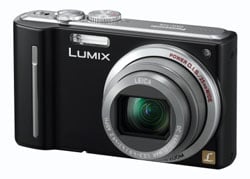 |
The Lumix TZ8 / ZS5 has a broad range of focusing options including face detection and recognition. Facial recognition has get ahead more than surgery less standard on compacts that provide assisted fully auto modes, though some work major than others. The Lumix TZ8 / ZS5 performs quite well in real-life conditions, it's quick to interlace onto to faces in the frame, tracks well and is quite a glutinous – IT doesn't misplace faces the s they address visibility. Corresponding whol such systems when the livid begins to fade, and when subjects are more than a few metres from the television camera, things take a trifle less clear-cut.
The Lumix TZ8 / ZS5 goes a step farther with this characteristic, allowing registration of up to six faces on which focus is prioritized should they appear in the frame. Faces can be registered manually or you can let the camera mechanically read faces that it sees a lot of. This is a useful addition to the Face off detection AF feature and it's also good fun to see people's names appear when they're being tracked and during playback. If there's unity criticism we'd make of these it's the hardscrabble nine-character limit on the name field. It would also be very much more useful if the name was written as a caption into the IPTC EXIF data. We'll smel at Aspect recognition in many detail a little subsequently.
If it can't find any faces the Lumix TZ8 / ZS5 defaults to the nine-area Auto focus system and this can be manually selected in the non-automatic shot modes along with AF tracking, centre AF and Office AF. In else words well-nig every AF manner ever devised, but no manual focal point option.
The Lumix TZ8 / ZS5 has a 2.7in LCD projection screen with 230 1000 pixels. Though it's a step shoot down from the 3in screens of the TZ10 / ZS7, the Cyber-shot H55 and the COOLPIX S8000, IT's a sainted quality screen that provides a bright contrasty image. Ilk all LCD screens, the one on the Lumix TZ8 / ZS5 is embarrassing to see in bright sunlight, simply Panasonic has at least attempted to cover this issue past providing alternative screen modes. Power LCD makes the screen brighter for outdoor use and Auto Power LCD mechanically adjusts the luminousness levels to become the ambient conditions. In bright sunlight it doesn't throw a vast amount of difference, but every little helps.
The TZ8 / ZS5's menu system is excited by pressing the central button on the four-way hold pad. What's displayed is contingent on the selected shooting mode, but the options are e'er arranged on three tabs – Rec, Travel Mode and Setup, with a twenty-five percent pill added for scene selection when either of the deuce scene selection options are assail the way dial.
The Rec menu holds all the photographic camera settings, the full set existence available in manual modes including Picture size and Quality, ISO sensitiveness, White balance, Face realisation, Metering modes, Burst mode, Digital zoom, Stabiliser and |Red-optic remotion. In intelligent Auto mode these are limited to Picture sizing, Burst mode, Colour rendering and Face identification.
| Support this site aside  |
The frame-up menu has quartet pages of settings including Date and clip, Custom preset survival, LCD musical mode, Economy (power saving), Language and Formatting. There's an option to display menu text and you prat besides display a live histogram during shooting.
In between the Rec and Setup tabs is a Travel fashion tab that you can employment to select a go up date and finish and then that the clock is reset to local time during your quell. For a minor feature, the travel mode settings are very big – the tab appears on the playback menu as swell – and add a stratum of, maybe unnecessary complexness to the menus. But if you travel a mete out, and this is, after all, a travel zoom, you'll beyond any doubt find it very helpful.
In playback mode the menu is also divided onto four tabs. The Manner tab provides selective playback options and a slideshow feature which replays images with 'Ken Nathan Birnbaum' style panning personal effects and a music backing. If you've used the Travel mode tab to set destinations you can selectively playback shots or movies from specific locations. This is something that many people will prefer to leave until they've transferred their photos to a data processor, but full marks to Panasonic for including genuinely useful travel features for those who deprivation them.
The Playback tab offers calendar-based date filtering, basic resizing and retouching tools and printing options. There's also a text stamp and title editing tool, but using the four-way control pad to infix characters is a fiddly business and, formerly again, something that's believably prizewinning done on a computer. The unexpended two tabs – Travel Musical mode and Setup are au fond the same as in shooting modes.
The Lumix TZ8 / ZS5's menus are long, but commonly used settings like Stabilization, Break mode, AF mode, Unintegrated balance, ISO sensitiveness, Intelligent exposure, Image size and LCD mode, can be accessed directly using the Q.Menu button on the backside right corner of the bring up panel. This displays settings connected an overlay strip at the top of the cover with options appearing on a drop-down button list. As with the Rec Mode menu, these options are dependent on the chosen shooting mode.
The TZ10 / ZS7 and the TZ8 / ZS5 are the first models in the TZ series to offer full extremity manipulate. The mode dial now offers Program, Aperture Priority, Shutter Priority and full Manual options; Program is essentially the same as the 'Normal' mode on earlier models, but the other new additions really do dedicate you much Sir Thomas More control than earlier.
The TZ8 / ZS5 has seven aperture settings (when zoomed-out) which you butt conform yourself in Aperture Priority or Blue-collar modes. Switch to Shutter Antecedency and you crapper choose from exposures betwixt 1/2000 and 8 seconds, with Manual boost extending the maximum to an impressive 60 seconds. To reach changes to the aperture or shutter, just now press the new Exposure release on the back of the camera, and then use the control lodgings to adjust the setting highlighted in yellow at the bottom of the screen.
Like most compacts, there are some restrictions. The fastest shutter speed of 1/2000 is only available with an aperture stove of f4-6.3. Drop to 1/1600 and you can barefaced the aperture to f3.6, but for the full aperture range, the maximum shutter speed is controlled to 1/1000. Again ilk most compacts there are also caveats involving the usefulness of manual photo control. Most notably, the inherently Brobdingnagian depth-of-field in most compacts, including this one, means it's ossified to achieve a blurred background on portraits even with the aperture wide open.
Happening a Sir Thomas More positivist note though, Aperture Priority does allow you to pick out the optimal f-telephone number to avoid diffraction. Shutter Priority also lets you choose deliberately slower-than-average exposures to blur moving action, much as waterfalls operating theater racing vehicles. You can find away how to achieve these personal effects in our Blurring Action and Photographing Water tutorials. Interim, total Manual lets you choose combinations of aperture and shutter which go way beyond normal metering or compensation ranges, allowing you to achieve massive under or over-exposures. You can too take rattling long exposures with ease.
The PASM modes are joined past Intelligent Auto, a pair of MyScene modes, SCN, Clipboard and Custom options on the dial, plus Motion picture mood. The TZ8 / ZS5 lacks the TZ10 / ZS7's dedicated movie button, which is a chip of shame, but in its place you'll find a fewer useful E.ZOOM button which automatically zooms the lense to its maximum telephoto setting surgery back to the wide angle setting.
Intelligent Auto on the Lumix TZ8 / ZS75 combines Panasonic's latest technologies to deliver a pretty infallible experience. The likes of earlier models, these include Intelligent ISO and Panoram Detection which both do a good job of figuring out what you'Ra trying to take and whether the subject's in motion. In practice this works very well, with the camera setting itself to its Landscape painting preset when we pointed it at a mountain, into Macro when directed towards a near field, then onto its Portrait preset with Face Detection when turned to masses. The camera's also good at detecting motion and increasing the sensitivity if necessary to maintain a quick shutter to avoid blurring – bang-up when photographing irregular children, although obviously the quality reduces quickly at higher ISOs. These tricks May now be several years old for Panasonic, simply persist some of the most effective on the market. Quite than lean against its laurels though the Lumix TZ8 / ZS5 enhances the Look Recognition technology first-seen on the TZ7 / ZS3, while too introducing Intelligent Solvent.
As before, Face Recognition can con up to six people along with their names and birthdays if desired, just in a feature article hereditary from the FZ35 / FZ38, the TZ8 / ZS5 tin can today store up to trinity poses for each person in order to better recognise them under incompatible situations. Erstwhile registered, these faces can have focusing priority concluded 'strangers', and it's also play to see their name pop-fly under the tracking frame. If the subject's age is to a lesser degree three eld old, the camera will also mechanically switch over to its Featherbed scene preset. In practice it really works too, and is within reason tolerant of accessories like hats, although sunglasses can fritter away the system.
Turning the telephone dial to SCN lets you choose from 29 Scene Presets which now admit the High Moral force option first seen on the FZ35 / FZ38. The High Dynamic scene preset simulates the effect of HDR photography with a single frame, digitally boosting phantom areas while attempting to retain bright highlights; it in point of fact employs the identical proficiency as Sound Exposure but with 2 or threefold the effect. This approach is however far from ideal, as meaningful brightness adjustments to a single exposure unremarkably incurs loss of prime, much as increased noise in those dwarf regions. This is further accentuated by the predetermined operative at a fixed sensitivity of 400 ISO. In habit the High Dynamic preset can noticeably further the shadow areas, albeit with increased noise artefacts when viewed at 100%. In and of itself it's top-reserved for undersize prints or emailed photos. Finally, the two MyScene positions can be accustomed put in and quickly admittance your favourite pair of presets, while Clipboard is wont to disk documents or memos. In PASM, MyScene or SCN modes, you can also record a five second audio memo.
Untried to the TZ8 / ZS5 is Intelligent Resolution, which applies greater sharpening to images, and if i.ZOOM is also enabled, allows the camera to digitally extend its zoom from 12x to 16x. Technically speaking the i.ZOOM extension inevitably doesn't record whatever greater detail, but does a fair Book of Job of scaling in-camera and providing a trifle extra reach when ultimate image caliber ISN't predominant. You canful see some examples of i.resolution and i.ZOOM in our TZ10 / ZS7 reassessmen.
Ambitious the upper cross-key lets you adjust pic compensation in a +/-2EV range, while pushful up a second time in certain shooting modes presents the bracketing options. The Auto Bracket option lets you take three images up to 1EV apart, patc pressing Display allows you to choose the Multi Aspect feature which takes images in 4:3, 3:2 and 16:9 aspect ratios in succession.
Though it lacks the TZ10 / ZS7's ability to instead cypher HD video in the AVCHD initialize, the TZ8 ZS5 can still shoot 720p HD video in the Motion JPEG format. Lower solving modes admit a 16:9 WVGA format measuring 848×480, VGA (640 x 480 / 4:3) and QVGA (320 x 240 / 4:3). Every last four video formats are recorded at 30fps on a fixed superior setting. What you recede by not having the TZ10 / ZS7's AVCHD option is the ability to record high quality HD video with smaller file sizes and yearner multiplication per clip – in our tests with the TZ10 / ZS7 the AVCHD codec flat clips of the same duration to about half the size up of those encoded using Motion JPEG. The other drawback is the 2GB file size limitation of the Apparent movement JPEG mode means that continuous video is small-scale to cardinal minutes here.
On the plus incline, you can use the TZ8 / ZS5's optical zoom during shot, though it's a dishonour the E.Surg button is disabled equally an automatic opened-to-tele, or vice-versa zoom would follow ideal for movies. Having said that, the single- (delayed) f number zoom works equally well, is virtually silent in operation and manages to hold the focus very well end-to-end the full soar range.
If we were to piss one criticism it would be that the microphone, situated midmost of the top panel next to the mode dial, was quite a impressible to wind noise. Registered members of Vimeo bum download the original Motion JPEG snip off shown here for evaluation on their own computers.
The Lumix TZ8 / ZS5 offers a variety of continuous shooting modes. Burst mode, uncommitted from the Q.Menu shoots 3 pulverised resolution operating theatre 5 standardised resolution images at a quoted frame plac of 2.3fps. We confirmed this in testing, still, the Lumix TZ8 / ZS5 can only achieve this pace at the 80 and 100 ISO sensibility settings. If you increase the ISO to 200 the rate drops importantly – to around 1.5fps.
Like other recent Lumix compacts, the TZ8 / ZS5 is besides equipped with a Last Speed Burst Scene planned which reduces the resoluteness to 3, 2.5 or 2 Megapixels (at 4:3, 3:2 and 16:9 aspect ratios respectively) and the compressing to Criterial, but allows you to shoot equal to 100 images at or so 6fps in Image Precedence, or up to 10fps in Speed Priority. Note both modes employ high-level sensitivities with 800 ISO non uncommon even under bright conditions. The Normal Collapse and High Speed Busted Preset modes both demand compromises, either in total frames or resolution respectively, but are arguably more utilizable alternatives to the infinite, but very slow continual grade of most contende models.
The Lumix TZ8 / ZS5 is equipped with the same 14.5 Megapixel CCD sensor measuring 1 /2.33in, as the TZ10 / ZS7, though like that model, it actually captures images with a maximum effective resolution of 12.1 Megapixels. The duplicate pixels around the march are accustomed maintain the angle of view and annul cropping at different aspect ratios. So with the camera zoomed-out, you'll enjoy 25mm coverage whether you're shooting in 4:3, 3:2 or 16:9 aspect ratios. This innovative approach is uncomparable to Panasonic and in dividing line to most compacts which simply crop strips from the top and bottom at wider aspect ratios, thereby losing resolution and coverage.
The best quality place setting produces images with a 4:3 prospect ratio measuring 4000 x 3000 pixels. There's a choice of two compression settings – Standard and Fine and Full resoluteness images files compressed using the Satisfactory setting typically measure around 5MB. With 40MB of constitutional memory you'll need to pick up an SD card if you want to shoot video or more than a fistful of images. The sensitivity ranges from 80 to 1600 ISO at full resolution, with a High Sensitivity Scene Preset mechanically choosing between 1600 and 6400 ISO depending on conditions – albeit operational at a greatly cut resolution of 3 Megapixels (in 4:3 fashion).
To see how the superior of the Lumix TZ8 / ZS5 measures-up in practice, take a look at our existent-life resolution and high ISO noise results pages, browse the sample images heading, or skip to the chase and head straight for our verdict.
Pages: 1 2 3 4
Panasonic Lumix DMC-TZ8 / ZS5
Source: https://www.cameralabs.com/panasonic_lumix_dmc_tz8_zs5/
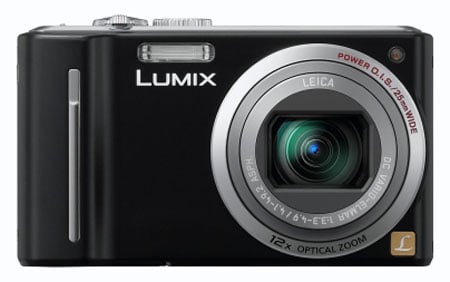
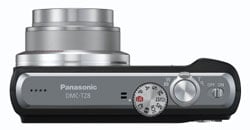
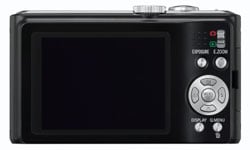

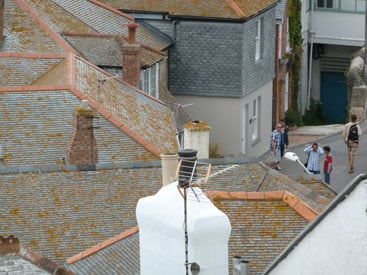


Posting Komentar untuk "Panasonic Lumix DMC-TZ8 / ZS5"